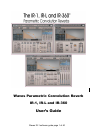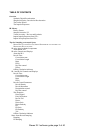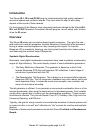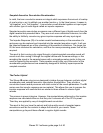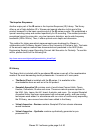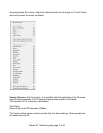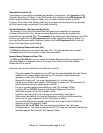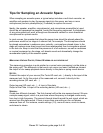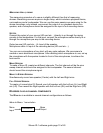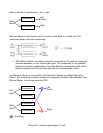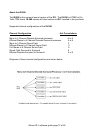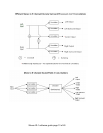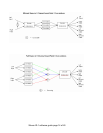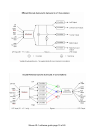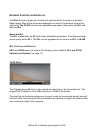Sampled-Acoustics Convolution Reverberation
In math, the term convolution means an integral which expresses the amount of overlap
of one function x as it is shifted over another function y. In the literal sense, it means to
“roll together” or to “fold together”. A convolution reverb blends together an input signal
with another type of audio signal called an impulse response.
Sampled-acoustics convolution processors are a different type of digital reverb than the
digital reverbs that preceded them. They are much more calculation-intensive, but offer
the ability to faithfully convolve any given impulse response with any input signal.
The Impulse Response (IR) of a certain reverb hardware setup or the acoustics of a
real space can be captured and imported into the sampled acoustics reverb. It will use
the Impulse Response as a filter consisting of thousands of reflections. The longer the
IR, the more intensive the calculation, and thus the more processing power that will be
required.
The result is that running a dry signal through a typical sampled acoustics reverb will
sound much like running it through the original device with the same settings, or like
recording the signal in the sampled space with a microphone setup similar to the one
used for capturing the acoustics. These reverbs usually offer very little control of the
reverberation properties and are essentially designed to faithfully super-impose the
sampled acoustics.
The Perfect Hybrid
The Waves IR-series plug-ins are designed to bridge the gap between synthetic digital
reverberation and sampled acoustics convolution reverberation. They provide a
convolution-based reverb processor with total control of the reverb parameters. The IR-
series uses the impulse response as raw material. This allows the user to process the
impulse response with controls that are similar to those offered in classic digital
reverbs.
The process is power intensive. However, the manipulations performed on the impulse
response are calculated offline so that they don’t consume all of the CPU’s power.
Then they are applied by way of straightforward convolution.
The result is that you have the natural and high-quality sound of sampled space
acoustics as well as the controls to shape the sound to your needs. These
manipulations go beyond those offered in regular digital reverbs.
Waves IR-1 software guide page 5 of 40



